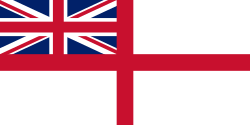 |
| Formations of the Royal Navy |
|---|
The professional head of the Royal Navy is known as the First Sea Lord and Chief of the Naval Staff (1SL/CNS).
Contents
- Fleets up until 2012
- Historic commands
- Commanders-in-Chief
- Admirals Commanding
- Vice-Admirals Commanding
- Rear-Admirals Commanding
- Senior Officers, commanding
- Flag Officers
- Former Flag Officers
- Commodores in command appointments
- Former Commodore command appointments
- Senior Royal Marines appointments
- Former Royal Marines appointments
- Squadrons and flotillas
- See also
- Footnotes
- References
- External links
There are presently two senior subordinates to the 1SL: the Second Sea Lord, who is also the Deputy Chief of the Naval Staff; and the Fleet Commander.